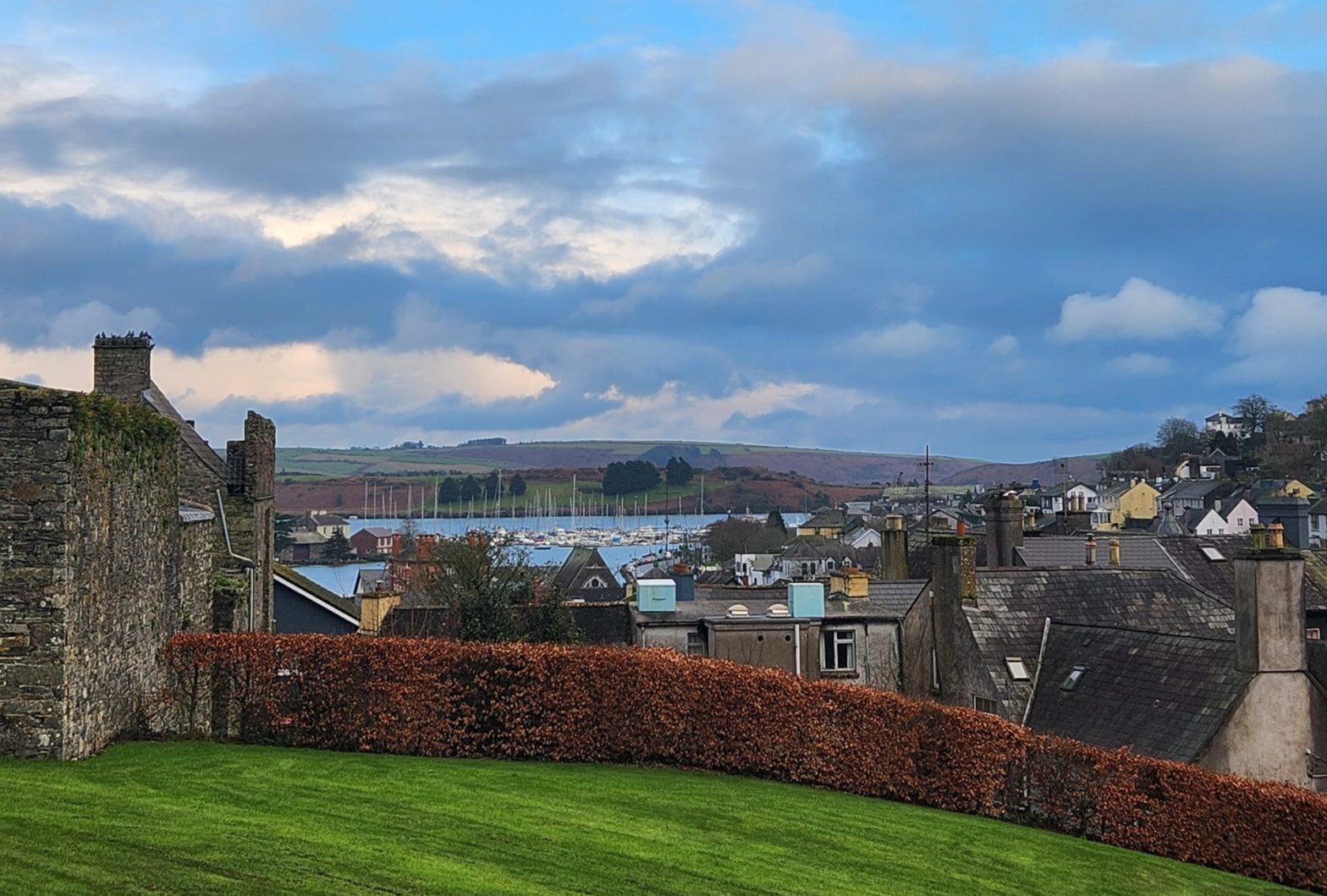Cork, County Cork, Ireland
It’s about a three-hour drive to Cork from Dublin. Piled into the bus, we rode past brilliant green fields, dotted occasionally with sheep and cows. Rain slipped down the windows for much of the drive but the sun emerged as we entered Cork City. Like Dublin, a river runs through the city which is the second largest in the Republic of Ireland.
That afternoon, we were led on a walking tour of the historic city, past iconic sites like St. Anne’s Church, where I saw the first rainbow of the trip, and The Butter Museum. Built on a marsh, we crossed both the right and left channels of the River Lee, exploring the city center which rests on the original island. At Elizabeth Fort, I climbed to the top of the ramparts, the river below, and houses and churches dotting the landscape in front of me. Here, too, I was graced by a rainbow. As the walking tour drew to a close, we explored the grounds of St. Fin Barre’s Cathedral and walked through the iconic English Market which sells locally produced meats, cheeses, fruits, vegetables… the list goes on.
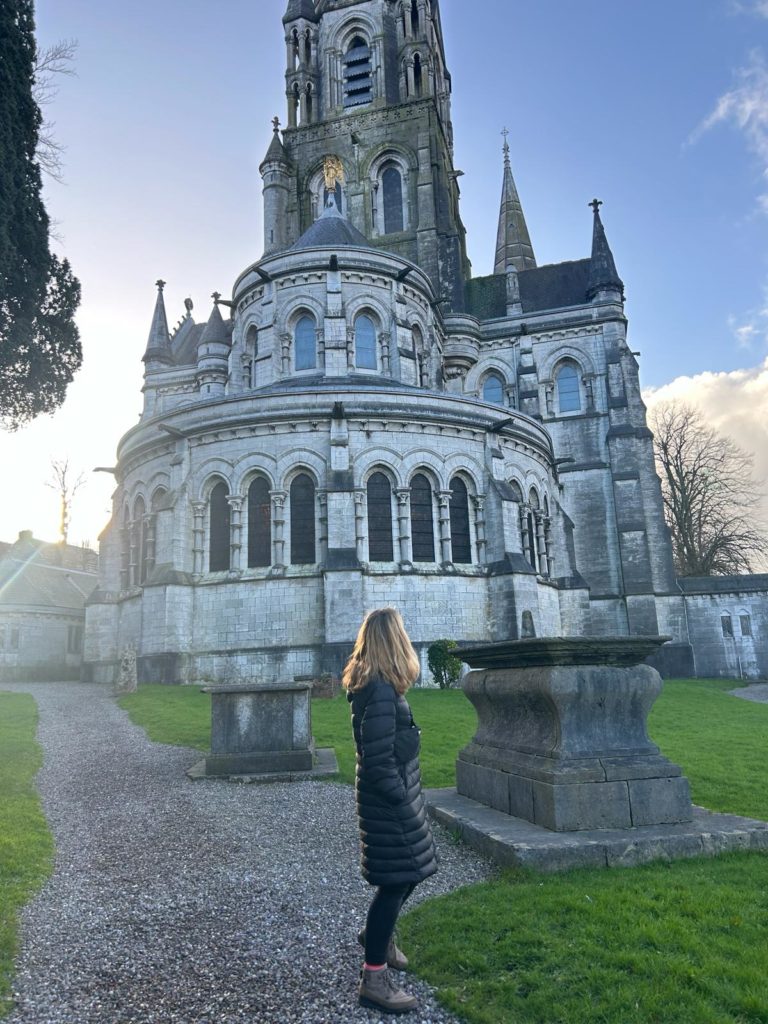
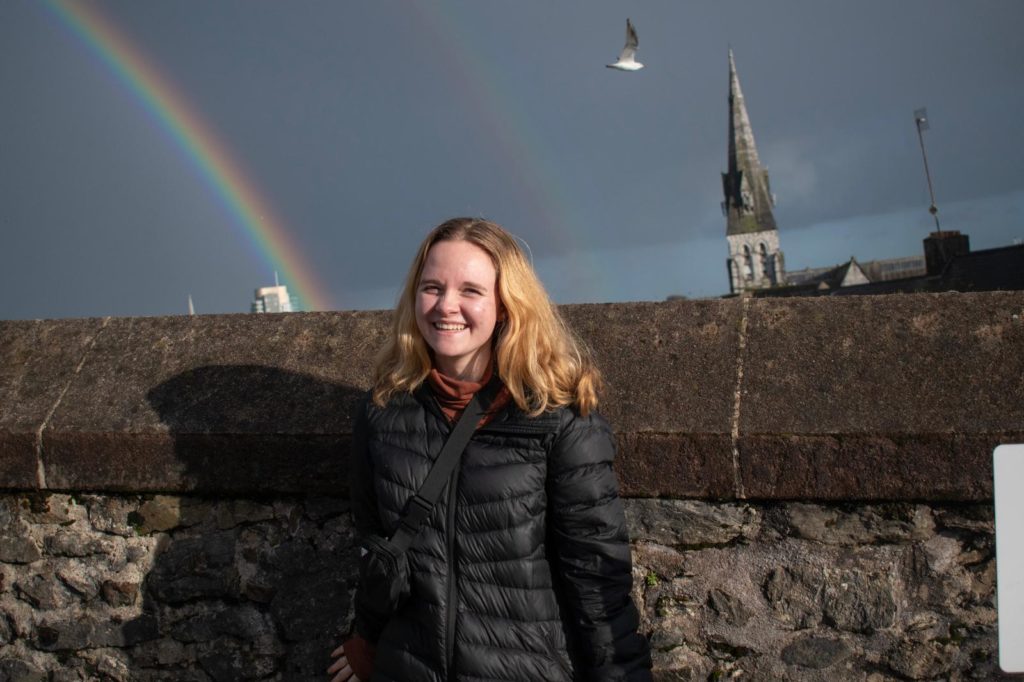
In the evening, I explored the city center on my own. Although I’ve never been to Cork, I felt at home in the city, able to navigate the winding streets easily. Chances are, it’s because I’ve spent the past month in Dublin. After living predominantly in small towns, city life has definitely been an adjustment. I explored bookshops and wandered my absolute favorite store, Søstrene Grene. Inside, it’s set up in a loop of booths which are categorized by type of item. Everything is carefully made and, dangerously, in my favorite pale greens and pinks.
Cobh and Spike Island
Up bright and early Saturday morning and it’s back on the bus for the quick drive to Cobh (pronounced Cove). The town is right on the harbor, colorful buildings climbing the cliff. Even in the rain, it was beautiful. Hiking up to St. Colman’s Cathedral, bells range over the city, announcing morning Mass. The belfry contains a 49-bell Carillon, the largest in Ireland. The sound was truly majestic, as were the views from the top of the hill, looking out over the city center and the harbor. Unfortunately, I didn’t have time to check out the Titanic Museum–Cobh was the last place the Titanic stopped before heading to New York.
At eleven sharp, I boarded the ferry to Spike Island, AKA Ireland’s Alcatraz. Initially used as a monastic outpost, the island functioned as a prison from 1779 to 2004. The prison only closed in 2004–the same year I was born–becoming a functioning museum in 2016. Historically significant, the island catalogues 1300 years of Irish history.
Whilst on the island, I explored the 24-acre Fort Mitchel, walking through the cold, dark punishment block, up the six bastions or lookout points, and past the timeworn shells of prison buildings. It was truly haunting walking through the grounds alone, with only the sound of the wind in my ears and the seagulls calling. I stared into two-story buildings open to the sky, trees growing inside, vines coating the walls, floorboards sloping in defeat.
Leaving the Fort, I walked down the hill to the abandoned village. Houses, a school, family stories, and history were abandoned to the elements following the prison riot of 1985. Many of the roofs had caved in, the earth seeking to reclaim its own. I wondered how long it would be before the woods swallowed the village, if these buildings could be fully erased.
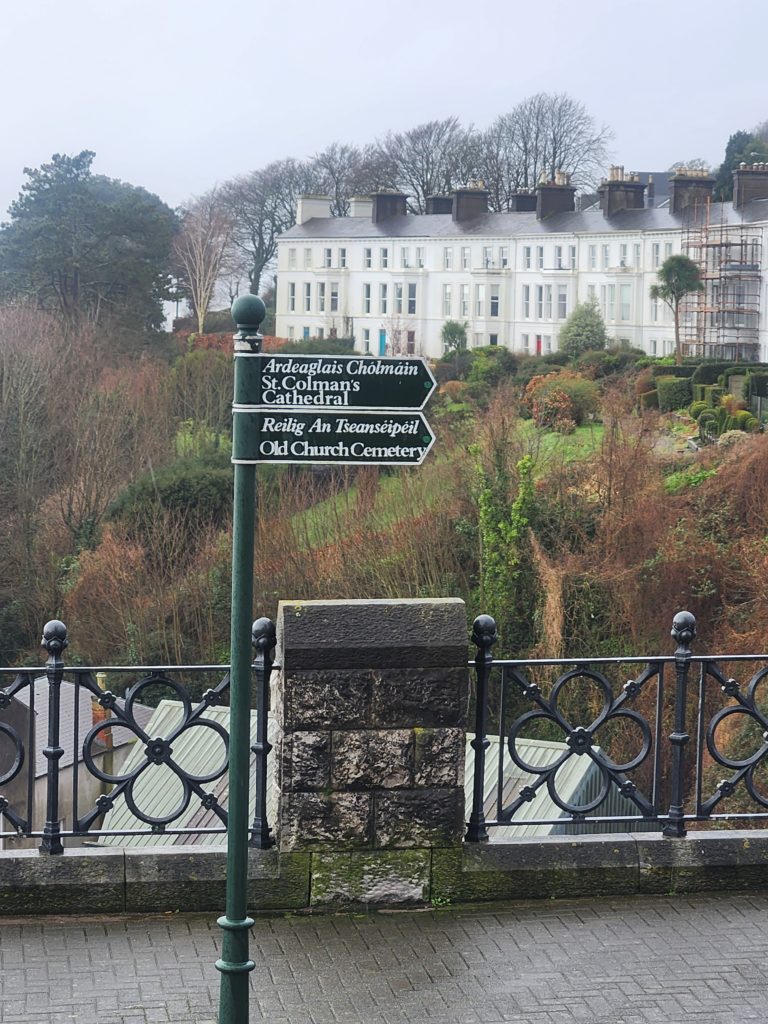

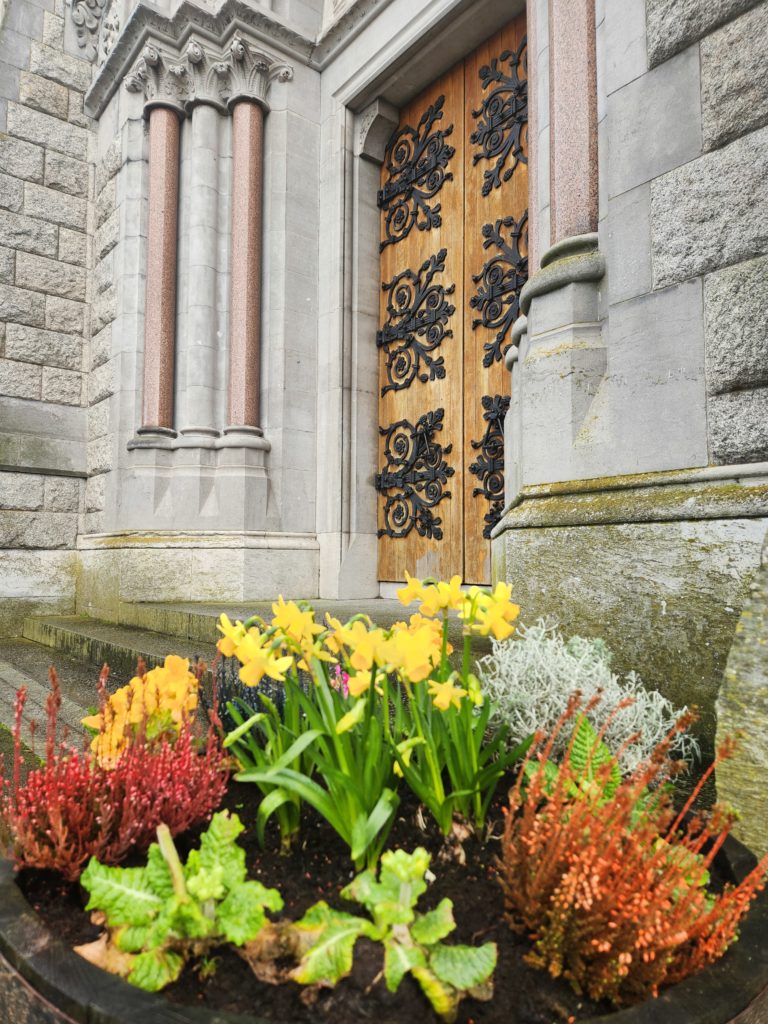
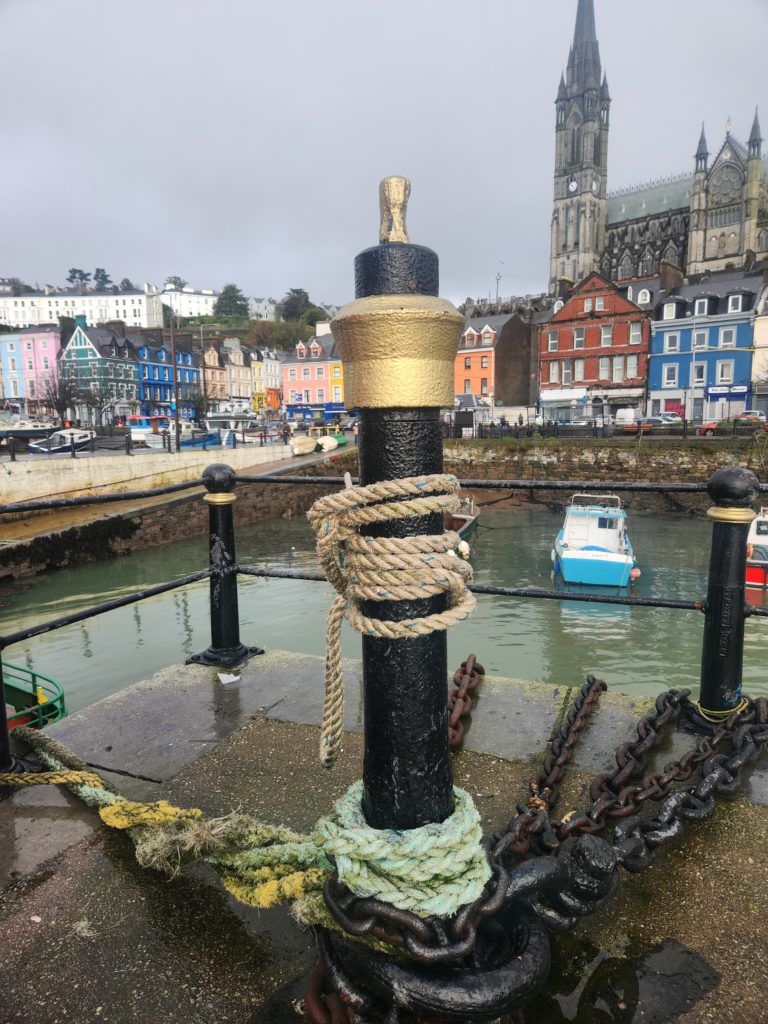
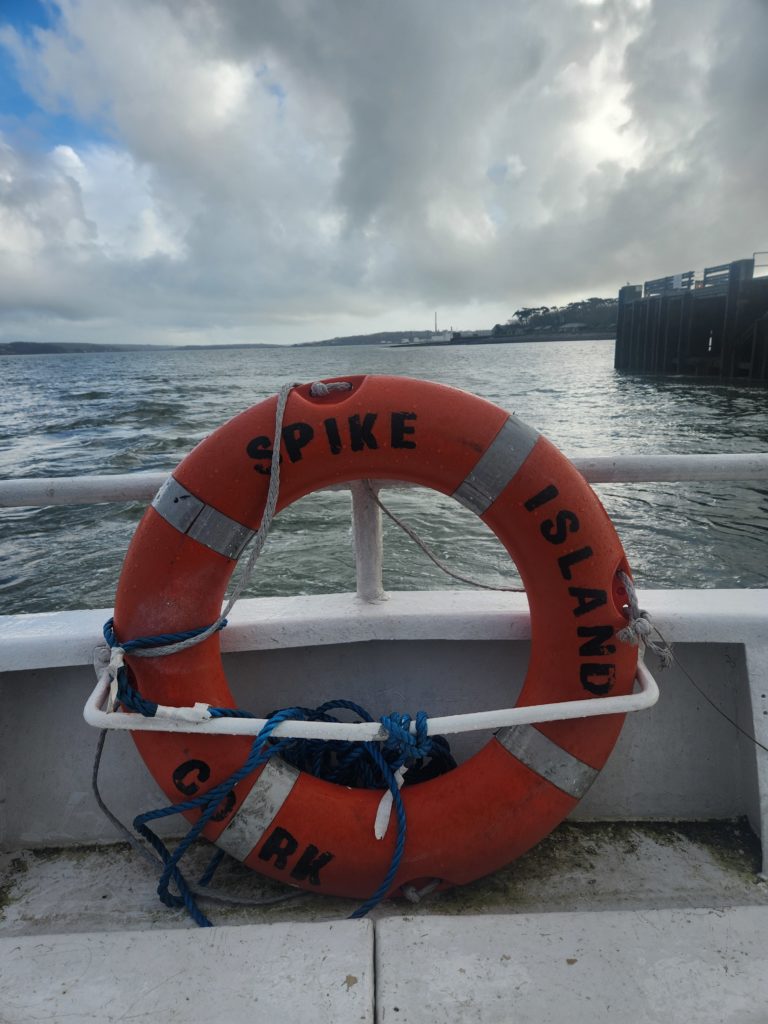
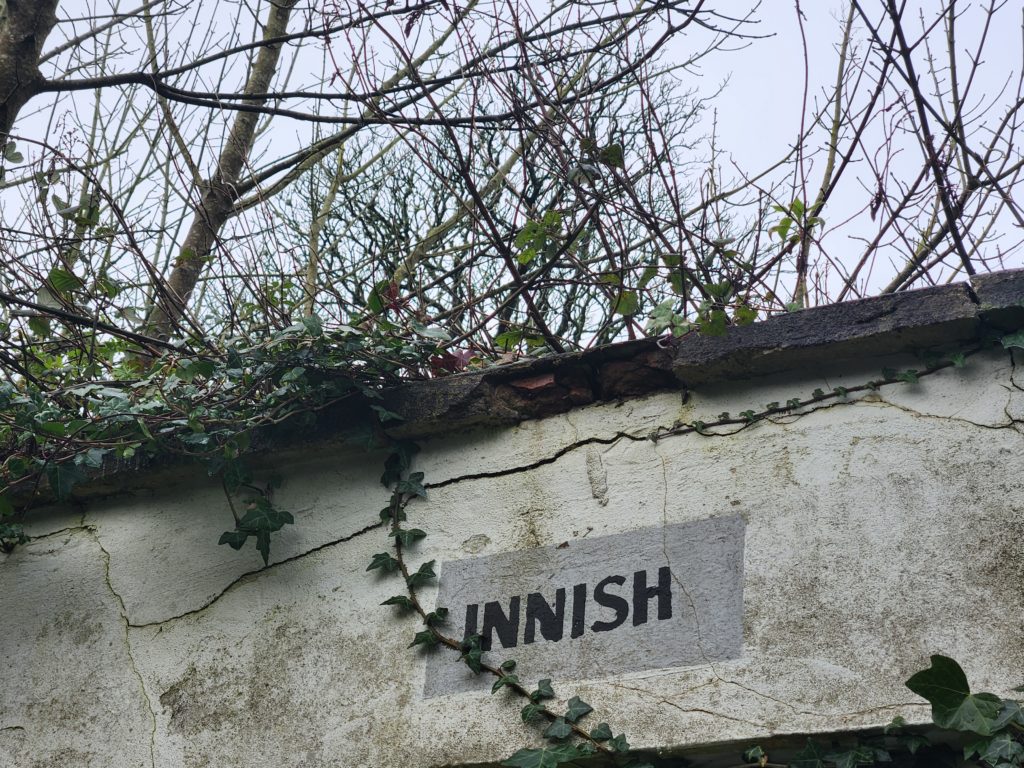
As my time on the island drew to a close, I walked along the shore, rocks and shells crunching beneath my feet. I couldn’t shake the feeling of sadness, the history of the island weighing heavily upon me. Whilst walking along the shore, I found numerous pieces of broken crockery: plates, bottles, perhaps cups… all thrown into the harbor when the British evacuated the island in 1938 after finally signing it over to the Irish.
Blarney Castle and Gardens
On the last day of the trip, we drove about fifteen minutes to Blarney Castle and the surrounding gardens. I’m sure you know the castle–it houses the famous Blarney Stone which is said to give the gift of eloquence once kissed. And yes, I did kiss the Stone because…why not? When else will I have the opportunity?
The air was crisp as I stepped off the bus, brushing against my cheeks and rustling through my hair. I walked past vibrant green fields, showered with sunshine and the blue of the sky. Through the gates, ticket in hand, Blarney Castle rose before me, partially hidden by the soaring trees. The gray-brown branches were still bare, twining into the sky like arms raised in supplication, not yet the flourishing shade that would be formed come summer. The castle was still a long way off along a winding path up the hill. Crossing the bridge, I climbed the path toward the castle, past purple, white, yellow flowers pushing up from the soft, rich soil.
Standing amidst the gardens, my body relaxed. There was a river running through the grounds and everything was soft and green and quiet. Captured by the riverbank, the water was crystal clear, rippling over stones and small plants. Birdsong filtered through the trees along with the sunlight, creating a patchwork against the brilliant blue sky.
Ahead, there was a crossroads, one side leading to the castle and the other to the gardens. Stepping toward the gardens, I could see the entrance of a cave which, obviously, I had to explore. The floor of the cave was muddy, moisture streaking the walls. Mosses and minuscule fern fronds crept from the rocks, taking life into their own hands, refusing to be denied. Outside the cave, on the high stone walls, vegetation clung to life, coating the stones in kelly, chartreuse, forest greens.
I climbed slick stairs set into the hill and emerged on a mulch path. The earth was springy beneath my feet and I could smell the nutty scent of its decay, the cycle of death to new life. The scent rested heavily on my shoulders, against my tongue, connecting me to the earth in a manner absent from the stone of the city. Fallen leaves squished beneath my feet and ferns brushed against my ankles. If I stood still, all I could hear was the birds chirping, the wind in the trees, the water bubbling below, the sound of my breath rushing out in a sigh as the knot of tension resting between my shoulders evaporated.
Following the path, I passed by centuries-old stone structures, weathered, nearly overtaken by the growth of the forest and its determination to regain its own. In the fern garden, I watched as water spluttered down rocks into the pool below. The ferns here were different, like little trees rather than those that rest close to the earth. Vines curled down the hillside, reminding me of the mountain paths of my home.
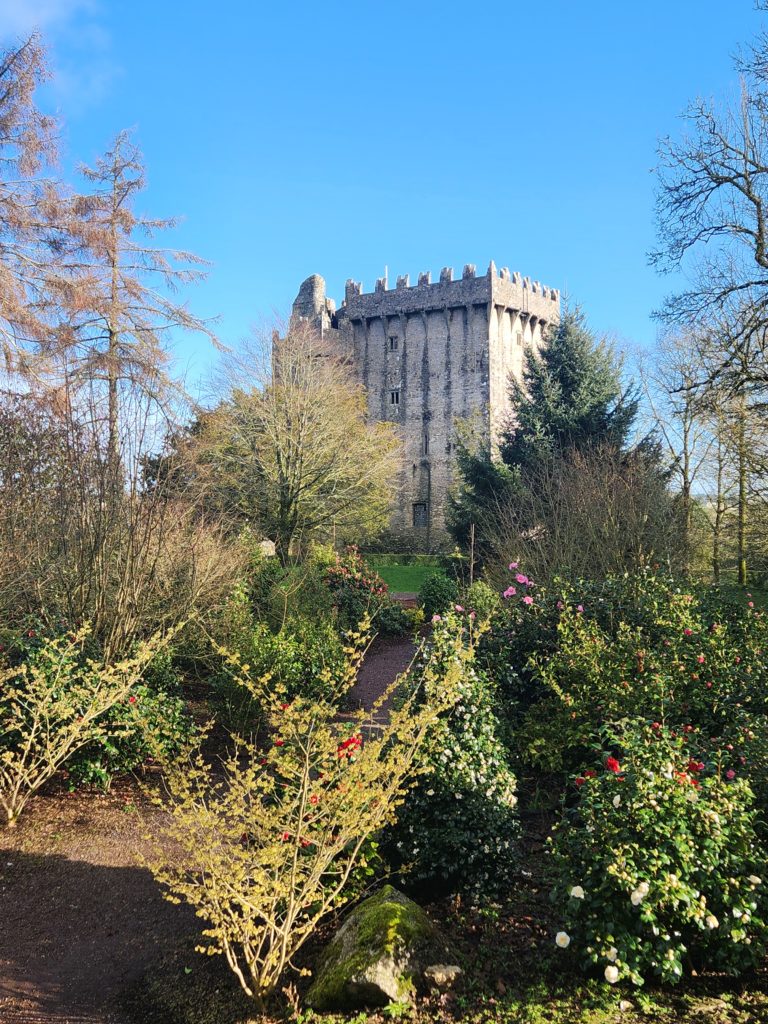

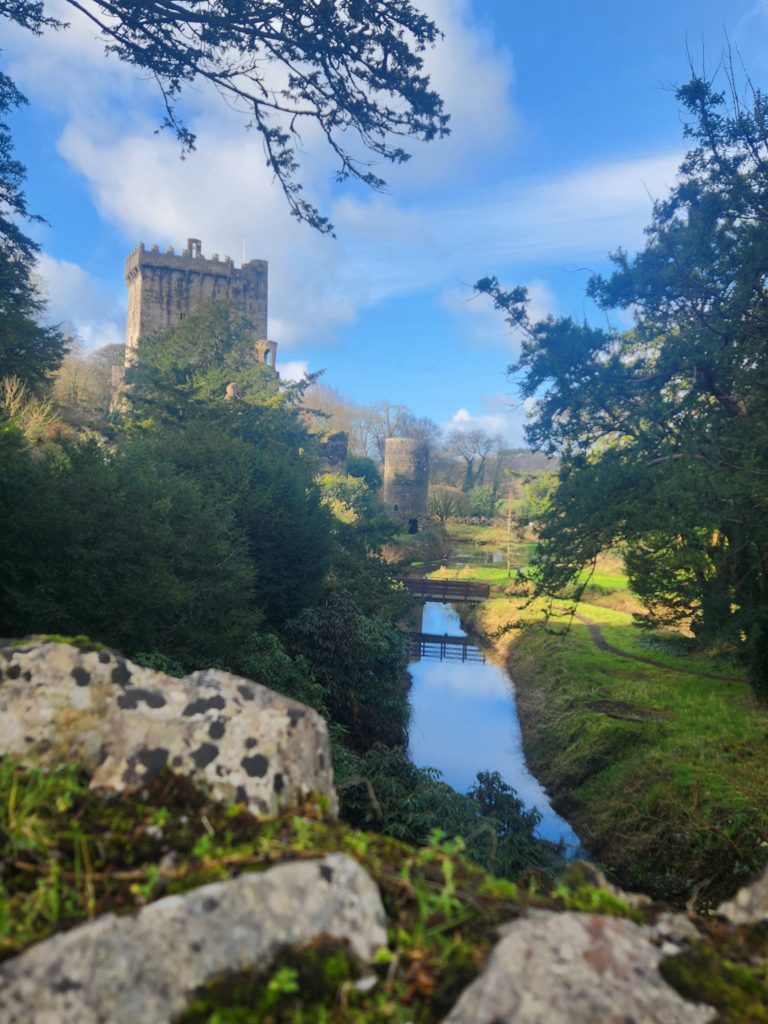


Soon, I emerged from the depths of the gardens to the tangle of red and pink camellias leading up to the castle itself. I ran past an old lime kiln, and paused to stand at the top as though this was my domain. I passed an ancient tree that was bigger than anything I’d ever seen. Stepping into the cocoon of its branches, the world was muffled and the air was cooler. From the main trunk, branches dipped back into the ground, rising again perhaps ten feet away. They were all connected, these trees, standing strong throughout centuries.
Closer to the wall, I entered the poison garden or, as the sign jokingly called it, the carnivorous courtyard. The plants in this garden, hidden behind the battlements, were carefully curated, contrasting with the wild green of the estate. Some plants even rested in cages. Here lay wolfsbane and mandrake, chamomile, and rhubarb. As the saying goes, these plants could kill me or cure me. It’s a chance I wonder if someday I’ll take. I think I’d like to run off to these woods and never look back. Maybe one day my feet will find their way here again.
To be honest, the grounds were far more impressive and impactful than the Castle itself. I think I may have a new favorite place and I do not say that lightly as someone obsessed with traveling and exploring new places. Then again, perhaps it’s because I’m a country girl at heart and I miss being immersed in nature. Either way, I’m convinced no one could ever be sad in a place this beautiful.


